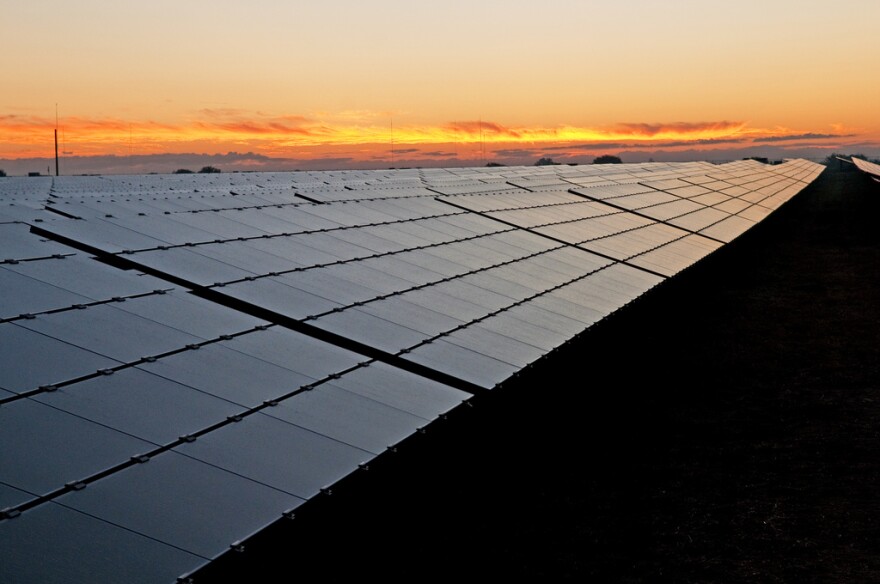Some of the world’s most intense sunlight beams down here in West Texas. Solar energy developers are taking notice.
“So for the same solar panel - think one panel - that you would put in Austin, for example, you put the same panel here - costs the same to make - but the panel located here is going to produce more units of energy, more megawatt hours. That’s because the solar resources is better in this area,” said John Lichtenberger of First Solar.
Last month, two solar developers made their pitches to the district. The first pitch was for a 60-megawatt solar farm while SunPower presented a 50-megawatt project. The largest solar farm operating in Texas today produces 35-megawatts.
So in a state that prides itself on doing things big, why has solar not taken off in Texas? To understand this contradiction, you first have to look at the state’s other renewable resource: wind.
The Lone Star State leads the nation in wind energy production. We have two major wind farms nearby in Pecos county.
But why wind and not solar? This issue was, and still is cost. But this is changing.
“We’ve had a decrease in panel prices alone, of anywhere from 89 to 150 percent in the last 12 to 18 months, ”said Erika Benson, an attorney specializing solar energy development.
“So it is dramatic. There are a number of factors for that: The technology has vastly improved extremely quickly. Countries like China - you know - have a number of major companies producing panels at extremely, extremely cheap prices.”
With China now manufacturing most of the world’s solar panels, the cost for solar farm developers is falling.
And then there’s taxes. Starting next year, taxes on projects like these will be lowered over ten years. Previously, appraisers in each county have been able to determine that rate themselves. What this means is that certain counties could be getting less in tax revenue than they had anticipated.
“That radically changes things. So now you this big boost [in] year one but it’s coming down really fast. So you lowered your taxes, to brag about the new tax base, but then it’s evaporating right before your eyes and now you’re having to raise taxes again just to get back to revenue neutral,” said Judge Paul Hunt, the chief elected official in Presidio County.
That’s not the only change in Texas that’s going to affect these two proposed projects. Currently, school districts can offer tax incentives to lure businesses that would pay a lowered rate for the first eight years. But four weeks from now, school districts will no longer be able to make that decision themselves. While the provision to incentivize businesses will still be there, it will be up to the State Comptroller to decide.
“If the determination is going to be made in Austin.” said Hunt. “They might say ‘Solar energy is worth it to us; we’ll sacrifice Presidio county, we’ll sacrifice what they think they want their neighborhood to look like and it will become our photon farm.”
Both companies proposals were accepted unanimously by Marfa ISD. The next step will be for the Comptroller to decide whether the projects qualify for the tax incentives.
- Jefferson Yen


